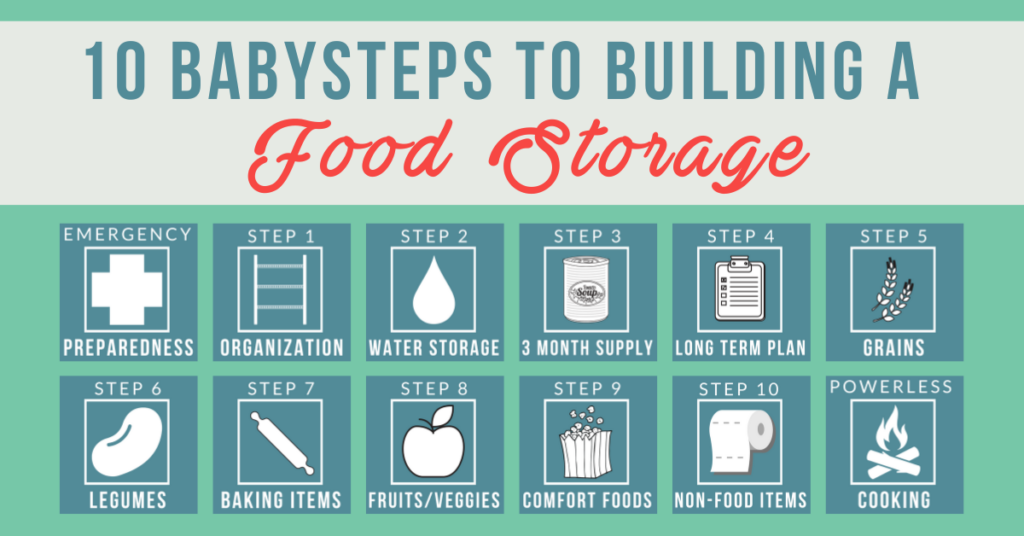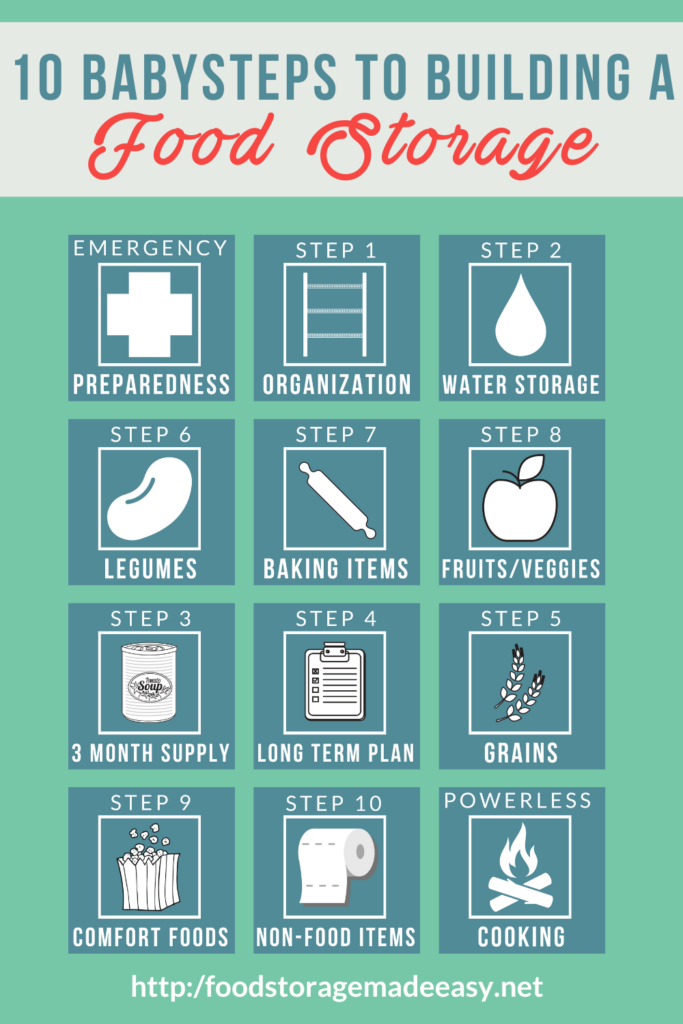
The Food Storage Made Easy 10 BabySteps cover all different aspects of food storage. As you make your way through the BabySteps you will gain skills and confidence in your food storage.
Before embarking on these steps, make sure to take a look at and accomplish the tasks on the “Emergency Preparedness Basics” page. Feel free to work on these steps at your own pace, but if you would like to have more guidance we recommend signing up for the Babystep Checklists. These checklist are email reminders you receive every two weeks and outline a plan for you to complete all ten steps within one year.
Food Storage Babysteps
 | STEP 1: SHELVES Determine which type of shelf system you want to use and purchase one shelf to get started. Build your own, buy plastic or metal shelves, or splurge and buy a fancy can rotation system. |
 | STEP 2: WATER Store a 2 week’s supply of water (1 gallon per person per day). Buy 55 gallon barrels, get several 5-6 gallon jugs, or fill up empty soda/juice bottles. Make sure it is food grade plastic. |
 | STEP 3: 3 MONTH SUPPLY Purchase a three month supply of foods you normally eat. Come up with meal plans for the 90 days, or just buy extras of things you use a lot. |
 | STEP 4: LONG TERM EDUCATION Educate yourself on long term food storage and determine the types of foods, recipes, etc. you want to eat. Use an online tool or spreadsheet to figure out quantities for your family. |
 | STEP 5: GRAINS Purchase your grains and learn how to use them: wheat, corn, barley, rice, pasta, etc. |
 | STEP 6: LEGUMES Purchase your legumes and learn how to use them: dried beans, bean soup mixes, lentils, soy beans, etc. |
 | STEP 7: BAKING INGREDIENTS Purchase items necessary for baking such as oil, sugar, powdered milk, salt, etc. |
 | STEP 8: FRUITS AND VEGETABLES Purchase or preserve fruits and vegetables to supplement your core foods. |
 | STEP 9: COMFORT FOODS Purchase any comfort foods that would be pleasant to have should you be forced to live off your food storage for a long time (chocolate, pickles, spices, etc). |
 | STEP 10: NON-FOOD ITEMS Purchase non-food items such as toothpaste, deodorant, female products, diapers. Paper plates, plastic utensils, etc. are helpful to avoid wasting water washing dishes. |
Once you have your food storage built up it’s a good idea to start thinking about how you are going to COOK all of that food. Check out my online Powerless Cooking Class for more ideas on this topic.
Join Our Community
If you want to follow along with other like-minded individuals I invite you to join our Food Storage, Survivalism, and Preparedness facebook group. We all learn from each other and share what we are doing to build our food storage and become more prepared. It’s a fun and encouraging place for those working their food storage babysteps!

Pin to Save for Later


 Hi there! I’m Jodi. I share my preparedness adventures via the blog and social media so you can see what I’m working on day to day.
Hi there! I’m Jodi. I share my preparedness adventures via the blog and social media so you can see what I’m working on day to day.